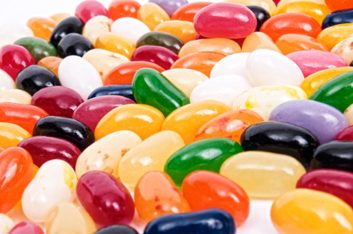
Shellac is made from bug excrement
Jellybeans are a tasty treat and come in many flavours, but did you realize their shiny coating is made from bug feces? Shellac, also known as confectioner’s glaze, is made from a resin excreted by the female lac beetle, indigenous to India and Thailand. The resin is processed into flakes, dissolved in denatured alcohol to make liquid shellac, and then sprayed on food products or used to make lacquer for hardwood floors and furniture.
Shellac is also sprayed on grocery store apples to make them shiny and keep them fresh in the store. When you pick an apple fresh from the tree and rub it on your shirt, you will produce a nice shine from the natural waxy protection already present in the apple skin. But if you wash that apple first, you won’t be able to make it shine as washing it removes the waxy coating. Apples sold in grocery stores must be washed for sanitary reasons and then sprayed with a fine mist of shellac to restore outer skin protection. Without this waxy layer, the washed apples would spoil too quickly.
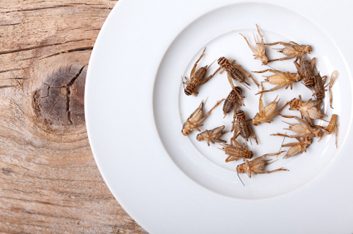
Acceptable levels for rodent hairs and insect parts
Have you ever found a hair in your bagel? It might belong to a rodent, and according to Health Canada, that may not be a food safety infraction. Health Canada provides guidelines for the general cleanliness of food, outlining how much microbiological or extraneous matter can be present before it is considered a food safety issue. Extraneous matter includes “animal and insect filth such as excreta, hairs, feather barbules, whole or parts of insects.”
Under these same guidelines, it is acceptable to find up to 10 insects, defined as “whole or equivalent whole forms of insects (more than half a head including entire frons)” in a 225g serving (about 1.5 cups) of processed raisins or currants. The unacceptable upper limit is 20 insects per 225 g. You will probably never find any insects in your raisins or currants, as these are the testing protocols for determining food safety. But knowing there are permissible levels of rodent hairs or insects in some foods, you may want to inspect them closely before consuming.
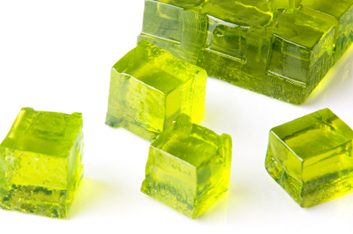
Gelatin is made from cattle hides and pork skins
Gelatin is used to make many desserts, such as jelly powders, marshmallows and frozen cakes. Gelatin is made from the collagen of animal skin and bones. Gelatin melts to a liquid state when heated, and solidifies when it cools. You may see gelatin form if you use animal bones to make your own soup stock and cool the broth.
Gelatin is the main ingredient in jelly powder. On its website, Kraft Canada states that the gelatin used in JELL-O is extracted only from cattle hides and pork skins, and only from the hides of healthy animals that have passed strict inspections and are found fit for human consumption. You do not recognize gelatin’s taste as an animal product because, as Kraft says, “during the manufacturing of gelatin, chemical changes take place so that the final product, the composition, and the identity of the original material is completely eliminated.” If you have chosen to follow a vegetarian or vegan diet, you may prefer to avoid eating products made with gelatin.
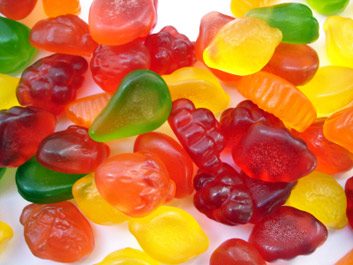
Fruit flavoured snacks are made with the same wax found in car wax
Carnauba wax, a key ingredient in car wax that produces a brilliant shine, is also found in gummy bears and fruit flavoured snacks. Carnauba wax comes from the leaves of the carnauba palm tree, native to Brazil. The leaves are beaten to loosen the wax and then the wax is refined, bleached and sold.
While it may also be found in floor polish, shoe polish, or cosmetics, carnauba wax is used to give a glossy shine to many things you put in your mouth, such as chewing gum, candies, gravies and sauces. It is also commonly used on pharmaceuticals as a coating on tablets to aid swallowing.
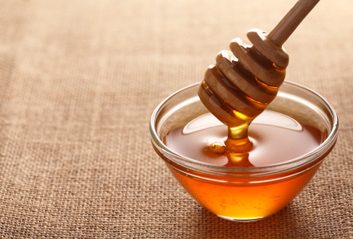
Honey is made from nectar and bee vomit
If you think honey is made from flower nectar you are only partially correct. An important part of the process is what happens inside the bee. Bees use their digestive systems to process the nectar by swallowing and regurgitating it several times before finally depositing it into the honeycomb for evaporation and storage.
While this sounds gross, it helps remove some of the water and natural yeasts present in the nectar, which could otherwise cause the sugars to ferment. Ripe honey is shelf stable and never spoils. Honey comes in various tastes and colours, depending on the type of flower nectar the bees collected. For example, clover honey is mild tasting and light in colour whereas buckwheat honey is bolder tasting and darker. Honey may also darken or become a bit stronger tasting with age, but will keep indefinitely in a sealed container at room temperature. If older honey crystallizes, simply warm it up until it turns clear.
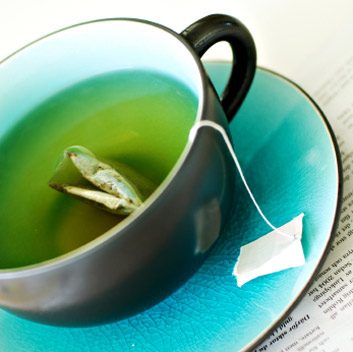
One solvent used to decaffeinate tea and coffee is a known carcinogen
Canada’s Food and Drug Act permits three food additives for decaffeination of tea and coffee: carbon dioxide, ethyl acetate and methylene chloride. The last two are chemical solvents that strip the caffeine from green coffee beans or tea leaves. Green tea labelled as “naturally decaffeinated” may have been decaffeinated using carbon dioxide, whereas methylene chloride is more often used to remove caffeine from black tea or coffee.
Methylene chloride, or dichloromethane is recognized as possibly carcinogenic, and for this reason, many manufacturers have switched to using carbon dioxide or the Swiss Water process instead. Of course, the methylene chloride is removed from the coffee or tea before it is packaged and sold, but knowing your tea or coffee has been processed using a carcinogenic solvent may influence your shopping choices.
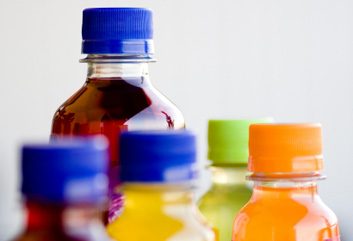
Supersized beverages can contain most of your daily liquid needs
While hydration needs vary depending on your gender, size and activity level, you should aim to drink enough water during the day so that you are rarely thirsty and produce at least 1.5 L of colourless or pale yellow urine a day. Your body needs water on an ongoing basis to aid digestion, replace fluid lost through breathing and perspiration, transport nutrients to your cells and get rid of waste. Many people drink 8 glasses of water per day, or about 1.9 L to meet their goal.
But would you really drink a large part of your daily volume goal all at once? Some soft drinks and sport drinks are now sold in gargantuan sizes. For example, a large soft drink from a fast food outlet can range in size from 730 mL to 960 mL. The same is true for sport drinks, which are sold in 591 mL, 710 mL and 946 mL bottles. Bottled water is sold in 591 mL bottles but also in 1L and 1.5L sizes. Keep in mind that the average capacity of an adult human stomach is about 900 mL. Rather than overloading your body with fluid all at once, it’s much healthier to drink smaller amounts that add up to your goal throughout the day.
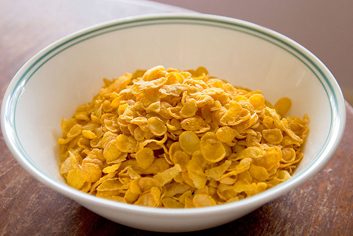
Corn products are in many more foods than you think
Corn is a key ingredient in breakfast cereals, bread, potato chips and French fries, soft drinks, and many prepared foods. In his book The Omnivore’s Dilemma, Michael Pollan writes that more than a quarter of the items for sale in the average grocery store now contain ingredients that came from corn. Check the food label of any processed food and you will most likely find an ingredient derived from corn, provided you know what to look for. For example, corn syrup is added to dried fruit or soft drinks to make them sweeter. Corn ingredients such as cornstarch and corn fibre provide body and a crispy texture to foods like french fries.
A chicken nugget contains modified cornstarch to hold it together, corn flour in the coating and corn oil from frying. But what you might not realize is that the leavenings, lecithin, mono-, di-, and triglycerides and citric acid, can also be made from corn. If you see modified or unmodified starch, glucose syrup, maltodextrin, crystalline fructose, ascorbic acid, lecithin, dextrose, lactic acid, lysine, maltose, HFCS (high-fructose corn syrup), MSG (monosodium glutamate), polyols, caramel colour, or xanthan gum, on an ingredient label, it was likely derived from corn.
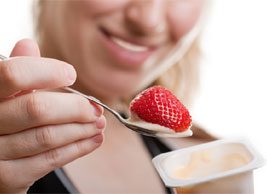
Where did that red food colour come from?
Check the ingredient list on your strawberry or raspberry yogurt for “natural colour”. The natural colour in your red-berry yogurt could be carmine, a red food colour made from the dried bodies of female cochineal insects, sourced from South America or Mexico. Cochineal extract has been used for thousands of years to dye fabrics but today is used primarily as a food or cosmetic colouring. Canada’s Food and Drug Act currently allows food manufacturers to declare an added colour by either its common name or simply as “colour”, and carmine is considered a natural colour.
Your red sport drink is another place you will find the use of added colour. But where did it come from? Some sport drinks use Allura Red (also known as Red 40), a petroleum-based azo dye. Allura Red is approved for use in products such as jam, concentrated fruit juice, ice cream, pickles and relishes, ketchup and flavoured milk products. Canadian law regulates the maximum percentage of Allura Red that can be used.
While rare, some people can experience severe allergic reactions to food colouring. However, food colour was not identified as a “priority allergen” in the recent announcement by Health Canada to enhance labeling for food allergens, gluten sources and added sulphites. If you have a concern about a particular product, you should contact the manufacturer and ask specifically which food colouring is used.
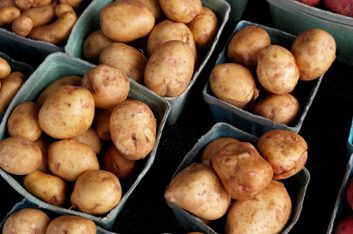
Some foods are exposed to radiation
Irradiation is the process by which food is exposed to a controlled amount of iodizing radiation in order to increase shelf life and kill harmful bacteria. Health Canada determines which foods may be irradiated, as well as the levels of treatment allowed and which products are exempt from indicating irradiation on packaging labels. The exempt products are potatoes, onions, wheat, flour, whole-wheat flour, whole or ground spices and dehydrated seasoning preparations. Canada’s Food and Drug Act allows for the irradiation of potatoes and onions to inhibit sprouting during storage. In the case of flour, irradiation is used to control insect infestation in stored food. For spices and dehydrated seasoning preparations, irradiation reduces microbes.
Labelling regulations for irradiated foods are managed by the Canadian Food Inspection Agency. If irradiation is used on any other foods sold in Canada, whether they are domestic or imported, the food label must identify that the product was irradiated, using both a written statement like “irradiated” or “treated with irradiation,” together with the international symbol for irradiation.
Related:
• 10 food additives you should avoid
• Quiz: How much do you know about organic food?
• What product labels really mean
